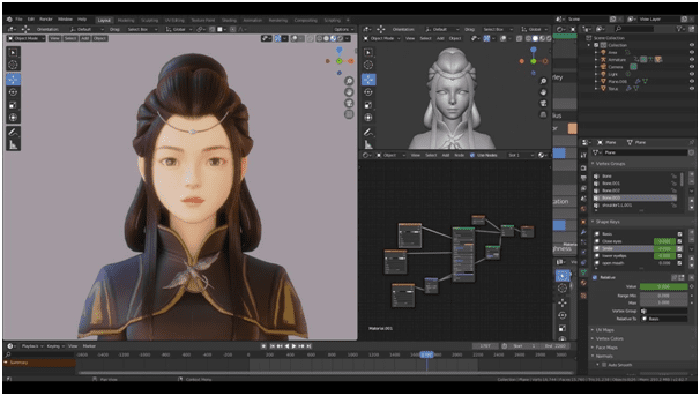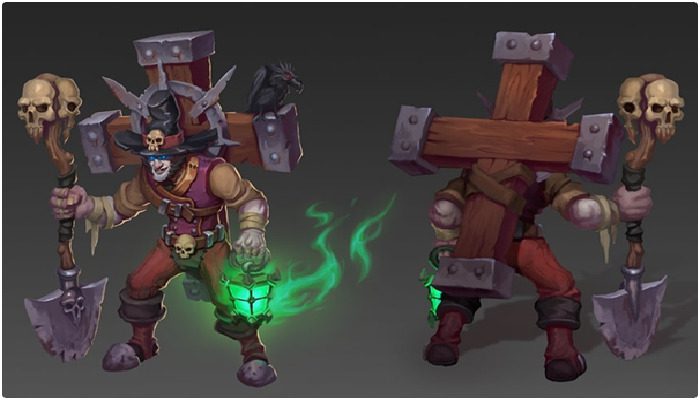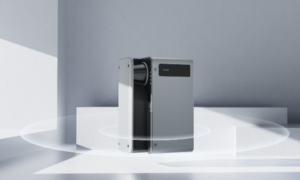One of the main factors that grab users’ attention in a game is how its characters interact, look, and function. And if you want to improve your users’ experience, you must go for the 3D effect that makes your characters voluminous, realistic, and closer to the users.
What is the creation of game 3D characters?
The process of game character development has come a long way since the early days of video gaming. In the past, game characters were often simplistic and basic, with little detail or realism. However, today’s game characters are much more complex and lifelike, thanks to the development of 3D modeling technology.
source: ytimg.com
3D modeling is a process whereby a three-dimensional image of a game character is created on a computer. This image can then be used to create a digital model of the character, which can be manipulated and animated to create realistic movements and expressions. The use of 3D modeling allows game developers to create richly detailed and believable game characters, which in turn helps to immerse players in the game world.
Stages of modeling 3D characters
In-game character development, the first and foremost thing artists need to do is to design the characters. They need to think about what the characters will look like and what role they will play in the game. After that, they will model the characters in 3D software. After the modeling stage is done, they will texture and rig the characters. Rigging is also important because it helps determine how the characters move. Finally, they will apply the game engine to animate the characters. Each stage can take days, weeks or months, or even years. But if you approach the task with due responsibility, the finished result will please you for many years.
Step 1: Concept art development
Concept art is the design of a character’s whole concept and style. To create a design idea, artists must employ a concept that holds the significance of a character’s personality, including their different characteristics, appearance, habits, behavior, background, and so forth. Designing concept art can be a complex process, but it typically begins with making a mood board and then sketching out the primary body and facial features and the silhouette of a character. Once the basic design is complete, artists can then work on choosing colors that fit the character’s personality and the overall tone of the piece. With careful planning and execution, concept art can be an incredibly powerful tool for bringing characters to life.
Step 2: Character Modeling
The process of 3D character modeling can be divided into several distinct stages:
- Blocking. This process involves establishing the character’s basic shape, including the face and body. Once the character’s skeleton is in place, the artist can then add muscular definition and other details. If the artist is familiar with human anatomy, they can stylize the character to create a unique look. However, even without this knowledge, it is possible to create an interesting and original character by starting with the basics of blocking.
- Sculpting. Sculpting is a digital artist’s technique for creating three-dimensional (3D) characters. Sculpting involves the use of digital tools to carve or mold the character’s form from a virtual block of material. The artist starts with a basic shape, such as a sphere or cube, and then adds or removes digital “clay” to create the desired form. Sculpting is a very versatile technique that can be used to create a wide variety of characters, from superheroes to monsters to everyday people. With the right skills and imagination, the possibilities are endless.
- Retopology. Retopology is a process in 3D modeling that is used to change the structure of a high polygon model into a new structure that has a lower number of polygons. This process is important because it can impact the quality and clarity of 3D characters. Artists must carefully organize and align the polygons to ensure that the animation functions properly. If done correctly, retopology can result in a more efficient and effective 3D model. However, if not done correctly, it can lead to problems with the animation, such as decreased quality or errors.
- Unwrapping / Baking. Now that you have your 3D character model, it’s time to unwrap and bake it. UV unwrapping is the process of taking a 3D model and flattening it out into a 2D image map. This is necessary so that you can apply textures and colors to your model in a painting program. Baking is the process of converting a 3D model into a 2D image. This is often done to create shadows and lighting effects. Artists often require handling baking a model that contains thirty or fifty different materials. By baking all of the materials into one texture map, you can greatly reduce the file size of your project.
- Texturing. Applying surface and color elements to a 3D character is known as texturing. This is an important phase for 3D artists, as they need to make sure that the model is an accurate representation of its real-world counterpart. This attention to detail is crucial, as even a small discrepancy can be enough to cause players to reject the character outright.
Step 3: Rigging & Skinning
Rigging is the process of creating a skeleton for a 3D model so that it can move. Artists add joints to the model’s geometric mesh, which allows it to bend and flex naturally. To make the character’s movements appear realistic, artists put the character in a variety of different poses. This is known as skinning. The character’s appearance during its performance depends on the quality of the skinning. Once the skinning is complete, the model is ready for animation.
Step 4: Animation
Creating a believable, lifelike 3D character is no small feat. To bring them to life, animators have to carefully craft every movement and expression. This process can be time-consuming and challenging, but the results are well worth it. A successful animation will not only look realistic, but it will also be able to evoke strong emotions in viewers. Whether they’re laugh-out-loud funny or heartwarming, the best animations always leave a lasting impression. So if you’re looking to create a truly memorable 3D character, make sure to invest in high-quality animation.
source: fgfactory.com
How much does it cost to create a 3D character?
Creating a 3D game character can be a costly endeavor, depending on the level of detail and complexity involved. For a simple character, the cost may be as low as a few hundred dollars. However, for a more detailed and lifelike character, the cost can easily reach the thousands. The cost is largely dependent on the software used to create the character, as well as the artist’s time and expertise. In general, more complex characters will take longer to create and will require more expensive software. As a result, the cost of creating a 3D game character can vary widely depending on the project requirements also checkout this tech guide.
Conclusion
Creating a successful video game character takes more than just artistic talent. An artist needs to have a strong understanding of anatomy, motion, and design to create a believable and compelling character. Additionally, they need to be able to work within the constraints of the game engine, which can be quite technical. As a result, it is often best to hire a professional organization that specializes in creating 3D game characters. These companies have the experience and expertise necessary to create characters that are both appealing and well-designed. Plus, they can often do so within the budget and timeframe that you have set.





































